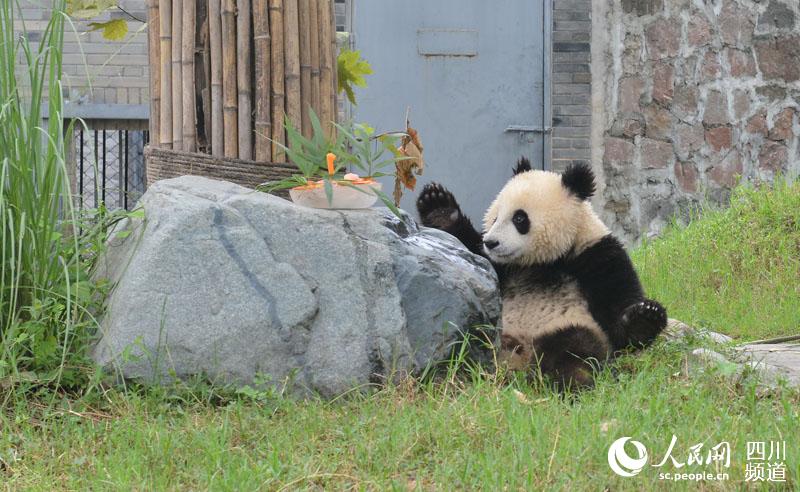


A panda in the Dujiangyan Base of the China Conservation and Research Center for Giant Pandas.
While visiting panda breeding bases in China, journalists from Japan and the U.S. said they gained a deeper understanding of the cultural connotations of the giant pandas, Sichuan Daily reported.
Pandas are iconic in China, meaning they don’t need to be advertised, the foreign reporters told local media during their visit to a panda base in Sichuan in southwest China.
“I have to say that pandas are really charming,” said Beijing Bureau Chief for the LA Times with the Chinese name Di Ruobing. “Getting closer to the natural habitat of giant pandas, I hope to tell what I saw here to my readers, who are animal protection enthusiasts,” she said.
“In Japan, giant pandas represent China,” said a reporter from Japan's NHK, adding that the Japanese people’s love for pandas is beyond imagination. “Unlike man-made cultural symbols such as the Kumamon, giant pandas are very special and cannot be duplicated,” he said.
The reporters said they think the Dujiangyan Base of the China Conservation and Research Center for Giant Pandas (CCRCGP) is the closest one to nature they’d ever seen.
Di said both she and her readers are deeply interested in protection and scientific research of giant pandas. The NHK reporter also said he came to Sichuan to find out the secrets and reasons behind the rising number of newly born pandas in China.
Di said the national giant panda park that the Chinese government is currently building is important to the protection of giant pandas and other animals. She suggests the building of diversified protection mechanisms and scientific research mechanisms to tackle the issue of releasing more giant pandas into the wild.
Japan was the first country to sign a scientific research agreement regarding pandas with China, the NHK reporter said. Over the past two decades, China and Japan have worked together to address a lot of difficult issues. He hopes that in the future, cooperation will be further strengthened.

 Award-winning photos show poverty reduction achievements in NE China's Jilin province
Award-winning photos show poverty reduction achievements in NE China's Jilin province People dance to greet advent of New Year in Ameiqituo Town, Guizhou
People dance to greet advent of New Year in Ameiqituo Town, Guizhou Fire brigade in Shanghai holds group wedding
Fire brigade in Shanghai holds group wedding Tourists enjoy ice sculptures in Datan Town, north China
Tourists enjoy ice sculptures in Datan Town, north China Sunset scenery of Dayan Pagoda in Xi'an
Sunset scenery of Dayan Pagoda in Xi'an Tourists have fun at scenic spot in Nanlong Town, NW China
Tourists have fun at scenic spot in Nanlong Town, NW China Harbin attracts tourists by making best use of ice in winter
Harbin attracts tourists by making best use of ice in winter In pics: FIS Alpine Ski Women's World Cup Slalom
In pics: FIS Alpine Ski Women's World Cup Slalom Black-necked cranes rest at reservoir in Lhunzhub County, Lhasa
Black-necked cranes rest at reservoir in Lhunzhub County, Lhasa China's FAST telescope will be available to foreign scientists in April
China's FAST telescope will be available to foreign scientists in April